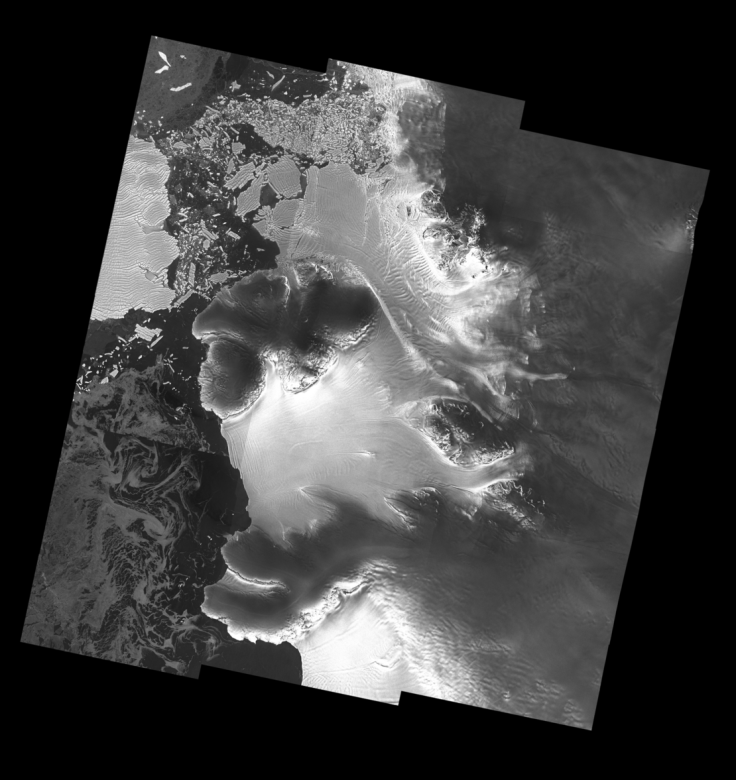Antarctica's Melting Ice Shelves: CryoSat Images Reveal Large Canyons Of Missing Ice

The ice-shelves in Antarctica are melting rapidly, with reports emerging constantly revealing new areas of depletion. The rate of depletion of these ice shelves is already alarming, with holes the size of the state of Maine being found through satellite imagery.
Now scientists have discovered huge inverted canyons cutting through the underbelly of these shelves, potentially making them even more fragile
Images of the Doston ice shelf from the CryoSat and Sentinel-1 missions have revealed large canyons of ice missing from underneath the shelves found floating in the coastal waters of Antarctica, around the ice sheet.
These ice shelves are mere extensions of the ice sheets —found on the land-mass of the continent — into the sea. These shelves perform a very integral function by counter-balancing the flow of the sheet toward the sea, ensuring the longevity of glaciers.
We know that ice shelves are constantly moving, changing shape and position and altering the landscape of Antarctica, much like an ice desert.
An increasing number of reports based on satellite imagery found that large ice shelves were thinning rapidly, and a report published by ESA said shelves were found collapsing at certain places.
This discovery is very worrying to scientists and environmentalists. According to the ESA report, the collapse of the shelves allows inland ice to flow faster into the ocean and this dramatically adds to sea-level increase in coastal regions.
This is one of the major anticipated effects of global warming, which will lead to large scale displacement of human life in the next 90 years.
According to a National Geographic report, “By the end of the century, chronic flooding will be occurring from Maine to Texas and along parts of the West Coast. It will affect as many as 670 coastal communities, including Cambridge, Massachusetts; Oakland, California; Miami and St. Petersburg, Florida; and four of the five boroughs of New York City.”
While scientists continue to study the changing face of Antarctica, these dramatic changes taking place below the surface of the ice shelves will provide a challenging poser as they try to figure out how this will affect the stability of the ice sheet.
“There are huge inverted canyons in the underside of ice shelves, but little is known about how they form and how they affect the stability of the ice sheet,” the report said.
Right now, the culprit is thought to be subglacial water draining from beneath the ice sheet that runs into the ocean. This flow is believed to create the ridges that have been found through satellite imagery and density mapping. The water at the bottom is shoehorned into a particular space under the ice shelf. Here, the trapped water tends to be warmer than water from the ice melting. This causes the water below to rise-up, causing flow of warm and cool water. Scientists feel that this flow is what is causing the ridges.
The team currently uses ESA’s CryoSat to monitor even the smallest changes to the polar ice caps, and the Copernicus Sentinel-1 mission to study how shelves flow to find out what happens in the underbelly of the shelves.
Noel Gourmelen from the University of Edinburgh and part of the team said in the report, “We have found subtle changes in both surface elevation data from CryoSat and ice velocity from Sentinel-1 which shows that melting is not uniform, but has centered on a 5 km-wide channel that runs 60 km along the underside of the shelf.”
“It is the first time that we’ve been able to see this process in the making and we will now expand our area of interest to the shelves all around Antarctica to see how they are responding. We couldn’t do this without CryoSat and the European Commission’s Copernicus Sentinel missions,” he added.
© Copyright IBTimes 2024. All rights reserved.




















